12-17-21
Suyundukov’s Shambala: The Light of Kyrgyzstan
By Diane Sippl
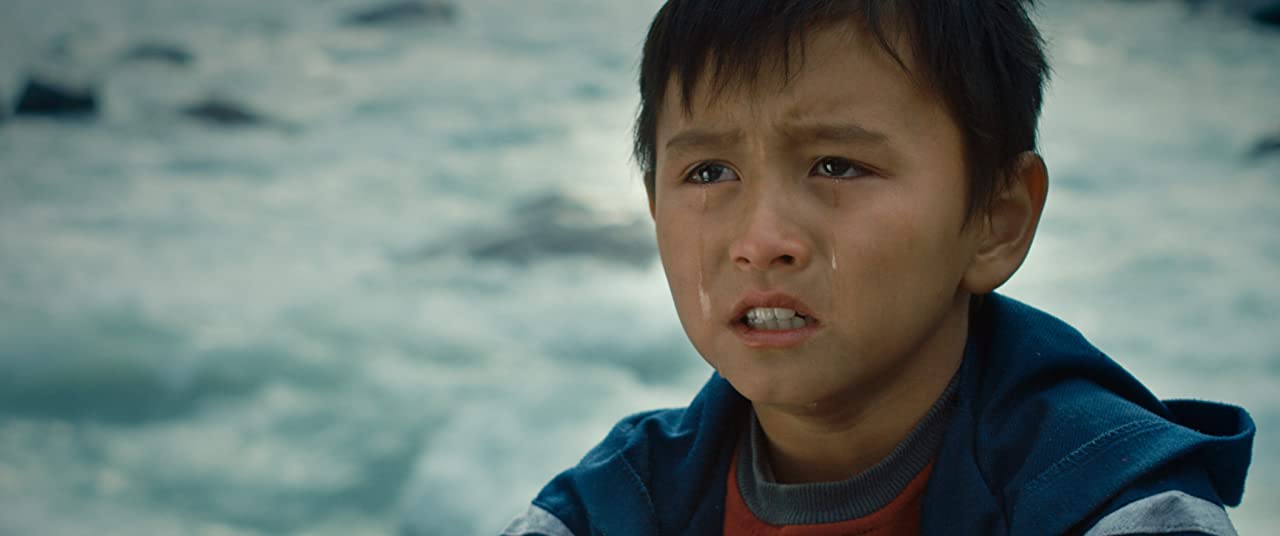
…what if it were possible for a work to be conceived beyond the self, a work that allowed us to escape the limited perspective of the individual ego, not only in order to enter other similar selves but to give voice to that which cannot speak—the bird perched on the eaves, the tree in spring and the tree in autumn, stone…
Italo Calvino, “Multiplicity”
(Those) living without legends and myths are condemned to spiritual poverty and are incapable of understanding the modern world.
Chinghiz Aitmatov
Nestled deep inside a mountain forest near a rushing river with rapids that race against the clouds, a small boy, naked, plays in the shimmering water and what looks like solitude—at least in terms of family and friends. Vulnerable, exposed to the elements and predators alike, alone with the trees, the birds, and woodland creatures, he explores his world voraciously, almost as if dodging his Uncle Orozkul and Aunt Bekey who raise him, turning to his grandfather, Momun, for guidance and companionship.
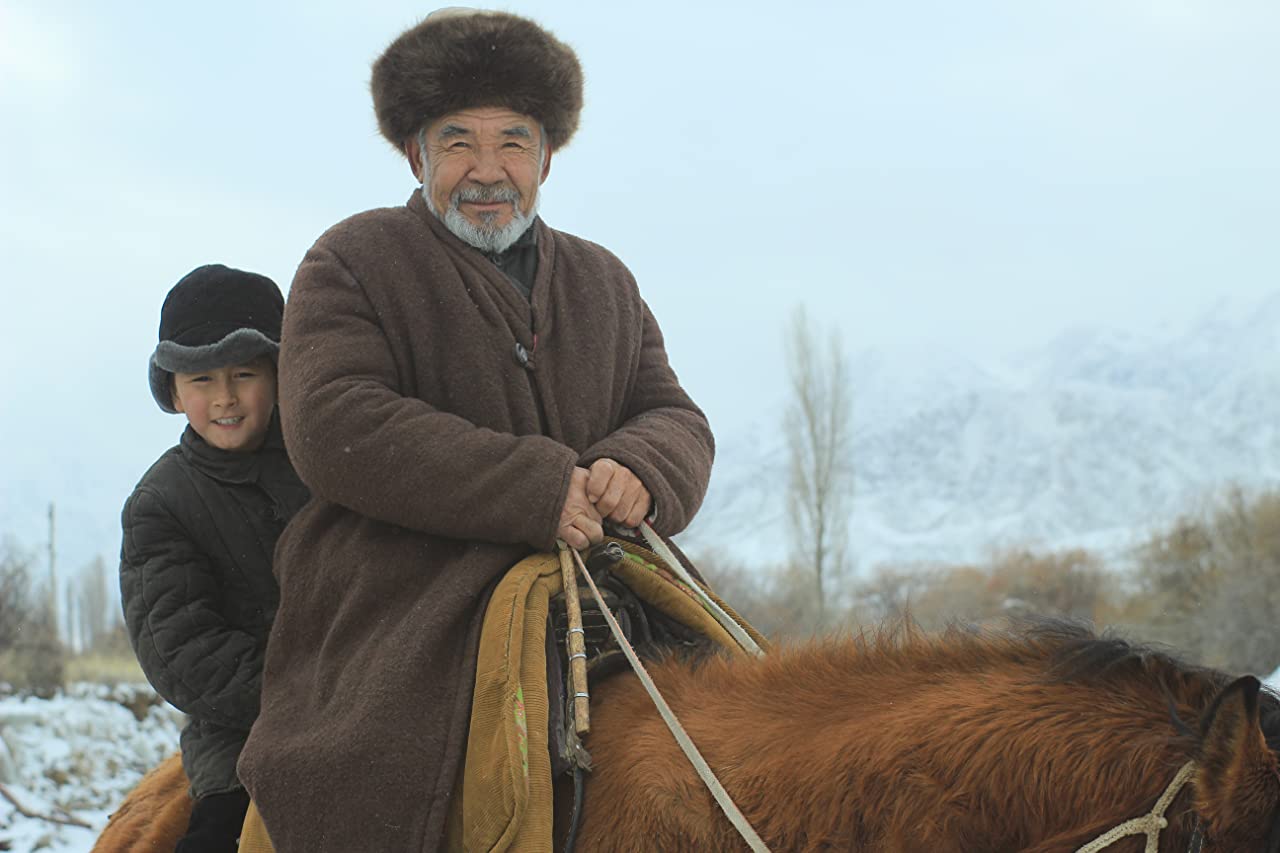
The boy is Shambala. His name has two meanings—“candle boy” (boy who radiates light) and also “pure land where desires are fulfilled.” Broadly speaking, the chain of high peaks spreading across the land is known as “Mountains of Heaven”; Momun means “good” or “kind one.” Then again, the name Orozkul means “hungry slave.” We can see that in terms of archetypes alone, we already have the components of mythopoetic cinema, and in his film Shambala, Kyrgyz writer-director Artykpai Suyundukov infuses not only the content but also the structure of his majestic work with the legends of his culture and his own childhood experience. He also draws from the immensely popular literary output of the esteemed Kyrgyz author, Chingiz Aitmatov, who created the following verbal portrait, characteristic of his oeuvre:
And all of a sudden, I began to understand his strangeness that made people shrug and mock; his dreaminess, his love of solitude, his silent manner. Now I understood why he sat on the look-out hill of an evening and why he spent a night by himself on the riverbank, why he constantly hearkened to sounds others could not hear and why his eyes would suddenly gleam and his drawn eyebrows twitch. He was a man deeply in love. I felt it was not simply a love for another person, it was somehow an uncommon, expansive love for life and earth. He had kept this love within himself, in his music, in his very being. A person with no feeling, no matter how good his voice, could never have sung like that.
This passage comes not from Chinghiz Aitmatov’s novella The White Ship (1970), which was one source for the film Shambala, but from an earlier groundbreaking novella by Aitmatov, Jamila (1959), in which a young man’s utterance in song compels the character telling the story to return to his own passion for painting so as to convey all that he cannot express in words. That picture—whether sung or painted or written on the page—not only lies at the heart of every work by Aitmatov but also finds a co-creator in Artykpai Suyundukov, who uses the screen as his canvas.
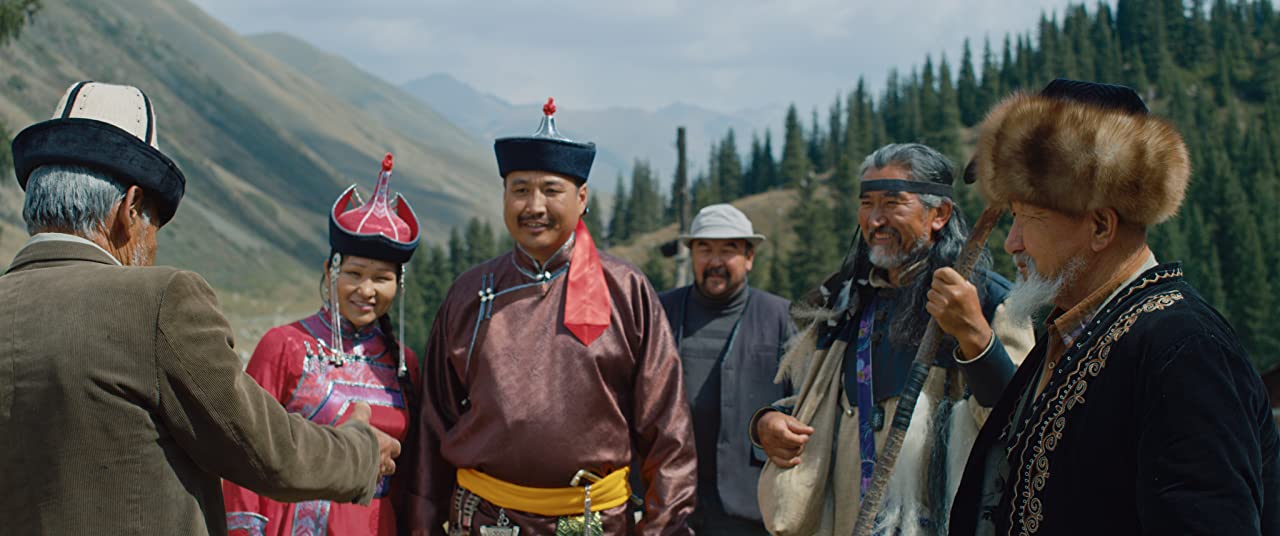
As two Kyrgyz artists, this novelist and this filmmaker can be seen (at least metaphorically) as sharing a key traditional role: that of the Manaschi, a bard who memorizes and recites episodes of Manas, the central epic of Kyrgyz culture, a poem of half a million lines passed down orally for well over a millennium that recounts the legends of the sacred ancient forefather, Manas, who united the Kyrgyz people against foreign enemies. Of course, Aitmatov and Suyundukov were not “called” in their dreams to be spiritually initiated into this shamanistic practice as professional Manaschi are, but Suyundukov came to make Shambala with the elder Aitmatov’s blessing and encouragement, and while there is much to be found in The White Ship that stems from its novelist’s childhood, the filmmaker claims that Shambala is fairly autobiographical of his own life as well.
Both works are anchored in the national origin legend of the Antlered Deer-Mother, and both dwell less in narrative suspense than in the poetry of Kyrgyz myths and folklore. The atmospheric sounds and images of a remote mountain outpost move the story purely through sensory effects on one level; nonetheless, aspects of the natural terrain and wildlife register on the symbolic level as well, all the while they carry commentary on the current social and cultural context. Likewise, the Manaschi interjects interpretations of contemporary social and moral issues into his performance to pepper the recitation of the Manas epic and punctuate its rhythm. The film Shambala works as a ritual, a tragedy, and a parable all at once, begging the world’s awe of nature, its attention to cultural legacy, and its respect for the vital relation between humans and their natural habitat as passed on by word of mouth.
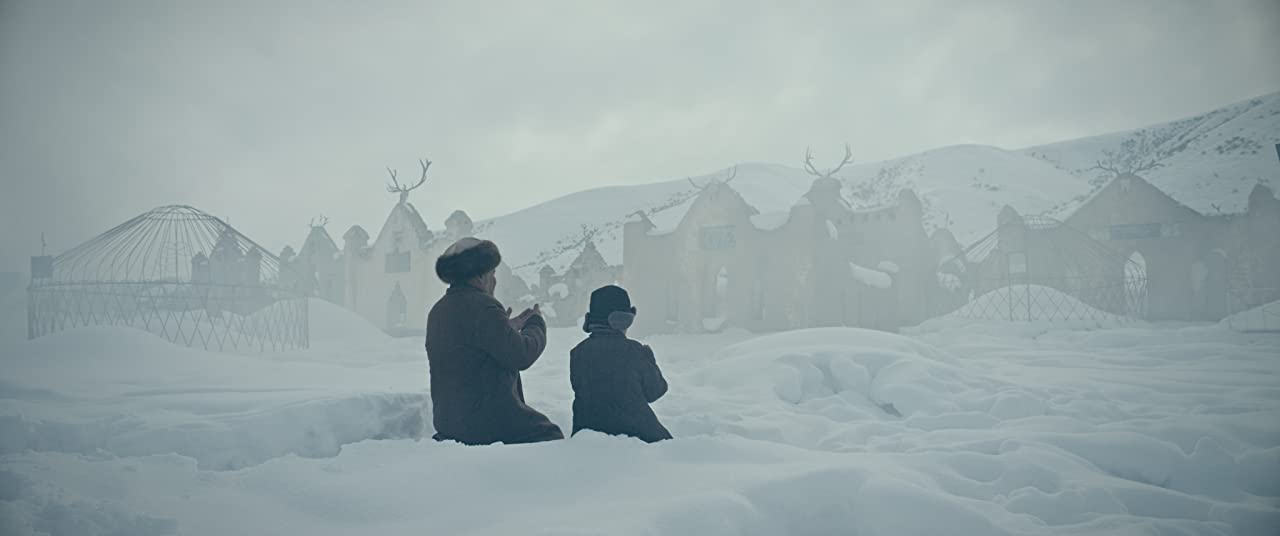
Manas: The Epic of Kyrgyzstan
I become excited whenever I approach Sheker and see in the distance the blue-white snows of Manas, shining brightly in the inaccessible heights of the sky. And if you lose yourself for a minute, if you stare only at that peak, at the sky, then time seems to lose its essence. The sense of the past disappears. No, you think to yourself, nothing has happened, nothing has changed, everything in the world is just as it was ten, twenty, and maybe a hundred and a thousand years ago. Manas stands as it has stood. And the clouds floating above it are one and the same clouds.
Chinghiz Aitmatov
With the steppes of Kazakhstan to the north, the deserts of China’s Xinjiang province to the east, and Tajikistan and Uzbekistan fingering their way into its valleys from the south and the west, Kyrgyztan stretches between its sea-size Lake Issyk Kul fed by thermal springs from the Tian Shan Mountains and its Talas Region at the foot of the legendary Mount Manas, named for the country’s national hero. There, dwarfed by the immensity of the landscape but equally so by the looming tales of the culture, one could feel that time stands still—or more to the point, that it moves in the cycles of nature and the anthropomorphic myths the people live by.
A nomadic way of life played out through beliefs steeped in the ageless wisdom of nature and the eternal human values of legends could shape the imagination. Over centuries, a shamanistic and totemistic world view could emerge in Kyrgyzstan that included a sense of participation with the Creation (a feeling of being at one with it), an acceptance of living under the watchful eye of the spirits (of ancestors), and a faith in pantheistic intercessors. The cyclical movement of time in nature (birth, death, and decay) could replace the linear plot development of a “story arc” (as laid out by Aristotle) with a more lyrical flow of time found in folklore, songs, and fairy tales. These could include the veneration of animals endowed with a sagacity beyond that of humans, creatures that could even become the alter-ego of the hero, or the moral measuring rod for the people surrounding them.
Such is the case with the Antlered Deer-Mother who, in the legend of Manas, rescued the last two remaining babies of their tribe (the Bugu, which means “deer”) from attacks by Chinese invaders, carrying them in a cradle in her antlers to Kygyzstan. There she fed them her milk to nourish and protect them so that they could propagate the clan. However even legends have villains, and here as in life, younger generations of the clan violated their sacred stag; they hunted the deer for their own possession, slaying them for their trophy antlers, debasing the deer as objects of trade and symbols of wealth. So the Antlered Deer-Mother and all her progeny fled the forests, never to return—except in the daydream vision of a young boy like Shambala who is happily consumed by his grandfather Momun’s tall tales of warrior invaders on horseback by torchlight. A fantasy sighting of the Deer-Mother temporarily restores Shambala’s faith, which is tragically defeated by his brute uncle Orozcul.
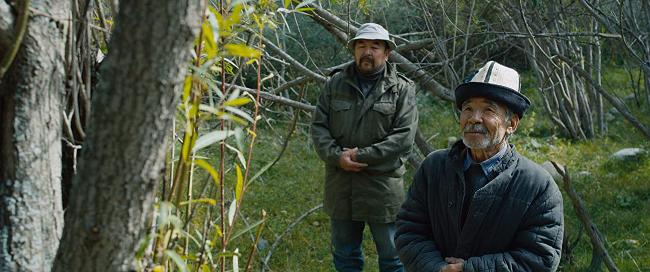
Momun: The War Within
Not in vain is it said that in order to hide one’s shame it is necessary to defame another….
…And not in vain do they say that people will not forgive those who do not respect themselves.
Chingiz Aitmatov
Here lies the fundamental tension of Suyundukov’s film: the power that Orozcul has to turn Momun against himself. Further symbolic interpretations of their names suggest that Orozcul means someone who is “incapable of change and empathy” and is unpredictably, uncontrollably violent, and Momun means a “believer with complete submission,” with faith firmly in heart. While Momun holds fast to his faith, he is also gullible and co-opted in the practice of daily life. An ogre like Orozcul can persuade Momun not only to kill a real deer who does roam the forest but even to feast on the prey with the hunting party, utterly betraying his own world view and destroying the sanctity of the family.
Earlier in the film we see Momun praying to the spirit-tree as Orozcul chops it down. Momun begs forgiveness from the tree for using its wood to build a yurt for his grandson. We also see him crushed by Orozcul’s removal of a fertility statue from the forest to “plant” it in front of his family yurt with the head of a slain deer on it—blood and all—so as to induce his wife to bear a child. Orozcul, Momun’s patriarchal son-in-law, poaches the land, beats his wife, drinks himself to oblivion, and brings Shambala mass media cartoons for entertainment.
The boy, however, relates to Momun as a walking archive of the treasures of the culture and takes his grandfather’s story-telling literally, as lessons for living that are alive and well. Shambala’s animist perception of his environment allows him to personalize it, to interact with its mythic dimension as real. When he sees Momun commit a sacrilege in consuming the sacred deer at the family feast, he feels abandoned all over again and seeks his universal truth by taking flight to Shambala. Perhaps his father, whom he is told sails on a big, white ship far away on the lake, and his mother, who seems to be working off in the city, will be in Shambala, but in any event, he would be closer to his ancestors, spirits, a place of harmony and light.
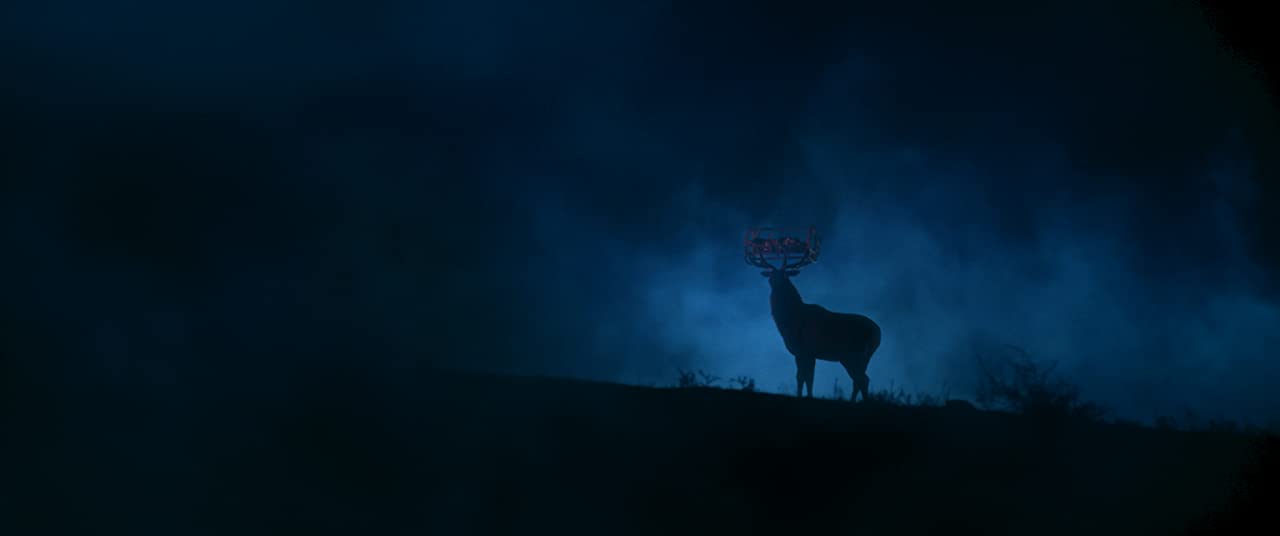
Shambala: Let There Be Light
The poet must imagine visually both what his character sees and what he thinks he sees—what he dreams, what he remembers, what he sees represented, what he hears described…. This “mental cinema” is always at work in all of us—and always has been, even before the invention of the cinema—and it never stops projecting images to our inner sight.
Italo Calvino, “Visibility”
In Artykpai Suyundukov’s film Shambala, the Kyrgyz mythic legacy recurs within a cycle in which transcendent events such as the birth of the culture are enacted repeatedly within an eternal present; the past co-exists with the boy’s ongoing experience. Likewise, a mythic place and a real place “live” in one and the same space. And although the point of view may shift from the grandfather to the grandson, there is no discrepancy in the ways Momun and Shambala view their world—until one crucial point in the film when the boy’s gaze rests upon the grandfather himself who, having shown his grandson the path toward spiritual strength, is finally collapsed on the ground; he looks physically unconscious and is surely mentally unconscious of the myths he lives by.
The poetic tension in the film Shambala rests deeply in the unrequited longing of the boy Shambala—for beauty, for harmony, for the return of the Antlered Deer-Mother who symbolizes so much more than his own parents but also the honor of the culture, respect for the land, its forests and creatures, rivers and lakes, the time-honored morals of its people. In this sense, the boy’s ultimate quest for the metaphysical place of “Shambala” is not a terminal act but re-entry into the eternal cycle of the myth: his flight is to life.
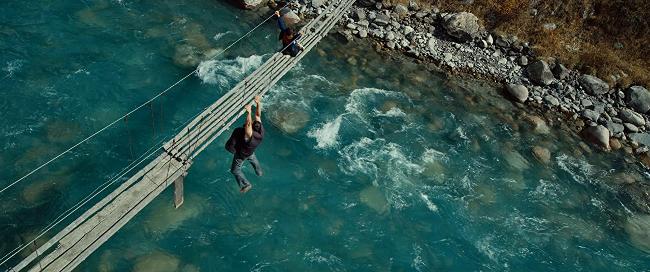
For the boy Shambala who faces human conflict every day (parental abandonment, domestic disharmony, defiance of sound morals), his imagination is a tool that allows him to conjure ethical alternatives, to traverse a pathway to a broader knowledge, one of identification with a world soul, one beyond his individual plight. Already beset with the ready-made images of “kids’ cartoons” that air on the TV set his uncle proudly installs in their yurt, the boy rejects his socialization by commercial images and turns his imagination to entering a hypothetical, potential world, the mythic paradise “Shambala,” where goodness and kindness are honored.
The Manas arrives in his imagination as, like a manaschi, he fuses separate episodes, granting them varying interpretations, connecting recurring elements and strands into a bigger picture. Capable of an inner vision as restless as it is profound, the boy Shambala literally thinks through distinct and memorable images: the cradle carried in the antlers of the Horned Deer-Mother, the sun through the tunduk of his yurt, the bold flight of the eagle. We take on Shambala’s point of view as it expands with, first of all, his direct observation of the physical world, then his figurative world as transmitted by his culture, then the way he fantasizes it in his dreams and reveries, and finally the way he internalizes his sensory experience. Exterior and interior, experience and imagination, self and world become one. Not only that, but ultimately, time itself is distilled, the future as irrevocable as the past. For the boy Shambala, time is determined by will.

So far, we have noted how filmic time can merge with mythic time in the ethos of the Bugu people, and how the physical space of an isolated family within a vast woodland can implode in the imagination of a young boy bereft of parents and friends. Time is eternal, space is unbound, and the remaining cinematic concern in transcribing Aitmatov’s The White Ship to the screen as Suyundukov’s Shambala is movement. Writer-director Suyundukov has commented that his perspective for the film was “upward”—that all the symbolic references of his poetry look in that direction.
Beyond the gaze upward to the spirit-tree in the second scene of Shambala, we visit Orozcul’s yurt to understand what Momun would build for his grandson: not just a temporary tent for a family on the move, but a spiritual home with the traditional opening to the sky at the top, to the light of the stars and the sun, with its tunduk at the center—the curved and crossed parallel wooden strips that are the insignia of the tribe. They represent the family as the core of the society and of civilization (and appear on the brilliant red and gold flag of Kyrgyztan, its sun with forty rays standing for the forty Kyrgyz tribes who united against the enemy Mongols).
Just as the tunduk, the tree, and the mountains themselves stretch upwards to the sky, so does the mighty eagle; the sharp-eyed guide for hunters, it is sought by a visiting shaman who asks its price. “It’s not for sale,” is the reply, but Shambala’s grandmother advises that they can give it to him. The eagle is blindfolded, presumably for domestication. When the opportunity arises, the boy demonstrates his first act of defiance. He removes the blinders and releases the eagle into the unlimited sky. Upward it soars, with a freedom of movement that frames the entire film with tragic irony when the bird reappears in the final scene. The point of view then more than ever is Shambala’s; he himself is perched like an eagle on a cliff high above the rushing river, looking to the sky.
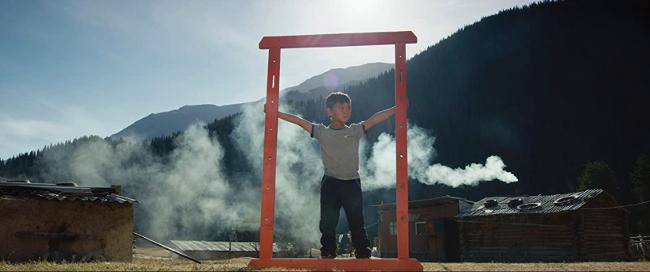
Shambala
Producers: Eldiar Madakim, Meder Suyundukov; Director: Artykpai Suyundukov; Screenwriter: Artykpai Suyundukov; Cinematographers: Akzhol Bekbolotov, Murat Aliyev; Editors: Nargiza Mamatkulova, Karash Janyshov; Sound Designers: Bakyt Niyazaliev, Kalybek Sherniyazov; Music Composer: Murzali Zhenbaev; Production Designer: Tolgobek Koychumanov.
Cast: Artur Amanaliev, Nasret Dubashev, Talant Apyev, Djamilia Sydykbaeva, Taalaykan Abazova, Omurbek Nurdinov, Talypzhan Boronbaev, Zuura Bakirova, Nazbiike Aidarova, Kubandyk Kamalov.
98 min., Color, Wide Screen. In Kyrgyz with English subtitles.